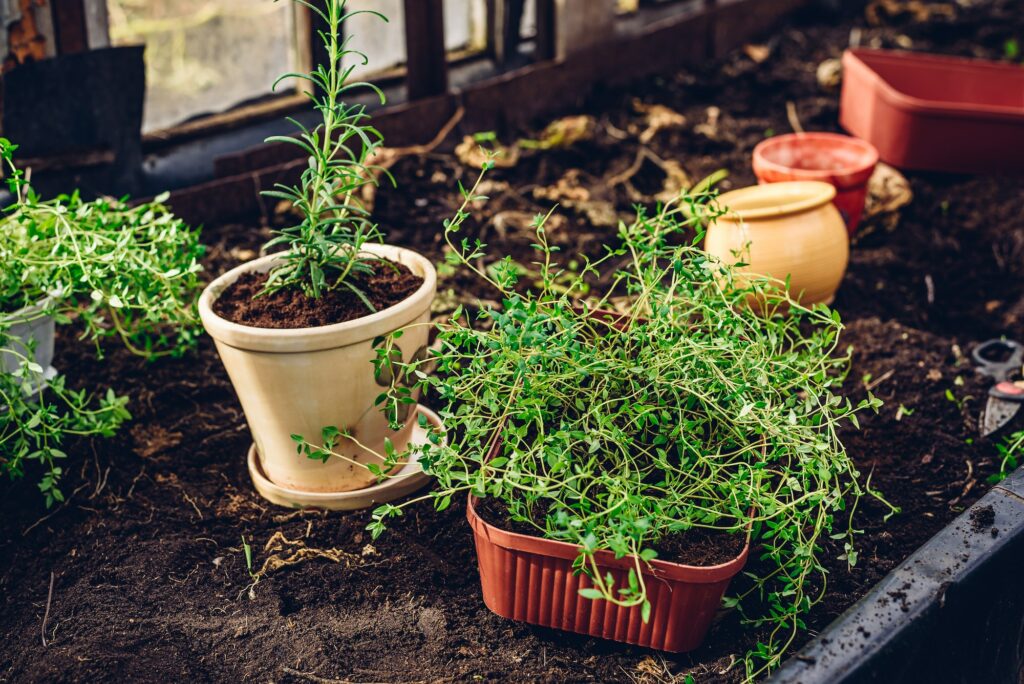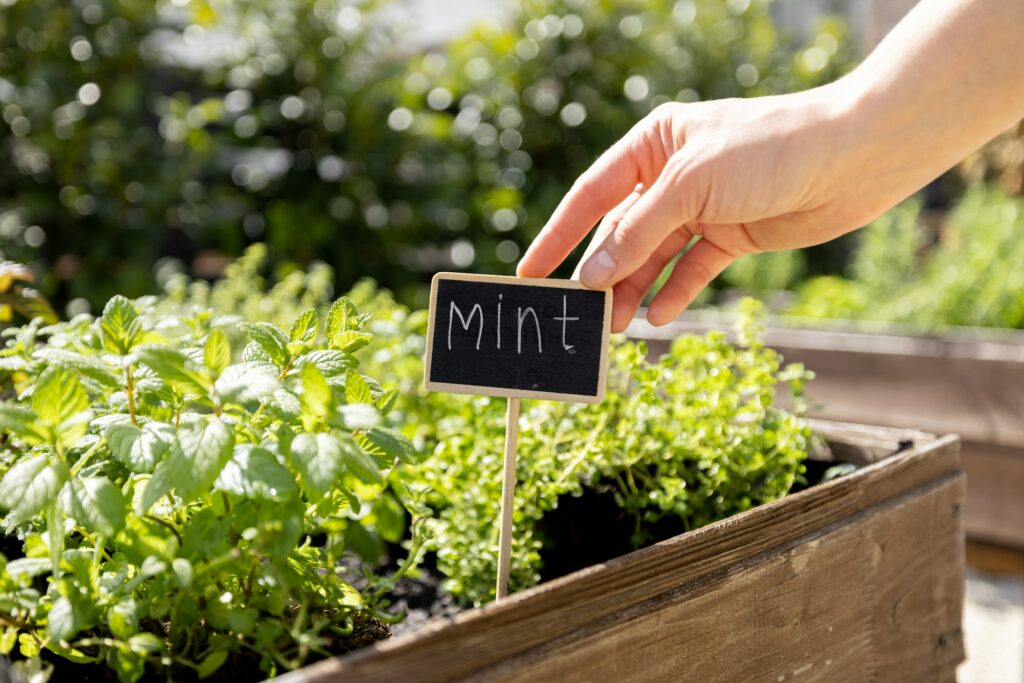Herbs have been used for millennia by many cultures as a means of medicine and to flavour food. With companion planting, you never need to go to the supermarket as all the fresh and nutritious herbs of your desire can be planted and grown by you.
What Is Companion Planting, And How Does It Maximize Herbal Growth?

Companion planting is an age-old technique of growing plants together in a mutually beneficial relationship. This technique involves selecting plants and herbs that can help each other in some way, such as by repelling presets, improving soil fertility, or providing shade.
Companion planting can be used to enhance the health, growth, and yield of the plants being grown. It does this in the following ways:
- By supplying nitrogen and other nutrients to the soil, companion planting can assist in increasing soil fertility.
- Companion planting can help to optimise sunlight exposure for each plant, which is essential for their growth.
- Companion planting can aid in pest control; planting herbs with strong scents near other herbs can repel pests. Companion planting also helps control pest populations by attracting beneficial insects.
- Companion planting can help conserve water and reduce the need for frequent watering; planting herbs with large leaves will shade the soil and decrease the rate at which water evaporates from the soil.
- Companion planting reduces competition between herbs for resources such as light, water and nutrients. This will ensure that each herb has access to the resources it needs to grow efficiently.
5 Best Herbs To Grow Together For Maximum Yields

Basil And Tomatoes
Basil is an excellent tomato companion plant because both plants like slightly acidic soil. Basil is also known to improve the flavour and growth of tomatoes. One more reason why basil makes a great companion plant for tomatoes is that it repels pests like aphids and whiteflies that can damage tomato plants.
Chives And Carrots
Chives are great companion plants to carrots as they not only improve the flavour and texture of carrots, but they also repel pests like the carrot fly and aphids.
Rosemary And Beans
Rosemary makes a perfect companion plant to beans because it repels pests like bean beetles by masking the scent of the bean plant. The bean plant, in turn, helps the growth of rosemary by adding nitrogen to the soil.
Thyme And Cabbage
Thyme is a great companion plant to cabbage because not only does it improve the flavour of cabbage, but it also repels cabbage pests like aphids and cabbage worms.
Mint And Broccoli
Mist is a great companion plant for broccoli because its strong and pungent scent deters pests that damage the broccoli, like cabbage moths, while improving the health, growth and flavour of the broccoli.
How To Start A Herb Garden & Get It Growing With Companion Planting
Now that you are well aware of which herbs and plants pair up with each other, it is time to start your herb garden. Here is a step-by-step guide on how you can start a herb garden yourself;
Choose A Location
Most herbs need full sun to grow well, so be sure to choose a location that gets at least six hours of direct sunlight a day. If you live in a hot climate, choose a spot that gets shade in the afternoon to prevent your herbs from overheating.
Make sure that your location of choice has well-draining soil, as it is essential for herb growth. Herbs do not like to be in wet soil for extended periods.
Prepare The Soil
Preparing the soil is an important step because it will improve the soil’s structure, increase its nutrient content and enhance water retention.
Loosen the soil of your chosen area and mix in organic matter like compost. Make sure that the soil has a pH between 6 and 7 because this is the pH at which most herbs grow efficiently.
Select Your Herbs
When selecting herbs, take into consideration factors like the amount of sunlight and water each herb needs, as well as the pests and diseases it is susceptible to.
Match the herbs you select to the conditions of your garden and your area’s climate. Some herbs prefer hot and dry conditions, while others prefer cooler and moister environments.
Purchase Or Start Seeds
You can now proceed to purchase your preferred seeds. You may also start seedlings within 6-8 weeks before your area’s last frost date.
When starting seeds indoors, use a seed-starting mix and place the seeds in a warm and bright location. Keep the soil moist and mist the seeds regularly to prevent them from drying out.
Plant And Water
When planting your herbs, place them in the ground at the recommended spacing level, and water them well. Be sure not to overwater them; the soil must be moist but not waterlogged.
Prune And Harvest
Regular pruning will help to promote the growth of your herbs. Once the herbs are fully grown, you can proceed to harvest the leaves as needed. We recommend harvesting your herbs in the morning after the dew has dried but before the sun gets too hot, as this is when the oils are at their peak.
FAQs
Are there any herbs that should not be planted together?
Yes. Some plants can have a negative impact on the growth and health of others, and as such, they should not be planted together.
For example, dill and coriander should not be planted near each other as they will compete for the same nutrients and light. Mint can be invasive to other plants and overtake them, so it is best to plant mint in a separate container or a designated area away from other plants.
What are the benefits of growing herbs in combination?
Certain herbs, when planted together, can improve the growth rate and health of each other.
- Certain herbs, like mint, rosemary, and thyme, can also act as pest control. The strong scents that they emit can repel pests and protect other herbs.
- Herbs like comfrey, clover, and alfalfa add nitrogen and other nutrients to the soil, which can benefit other herbs grown in the same area.
- It has been proven that growing herbs together enhances the flavour of the herbs.
What soil conditions are best for growing herbs together?
- Herbs generally prefer soil that is well-draining and does not become waterlogged.
- They do well in soil that is right in organic matter.
You should also ensure that the soil has a neutral pH, as this will help the herbs grow more efficiently.


